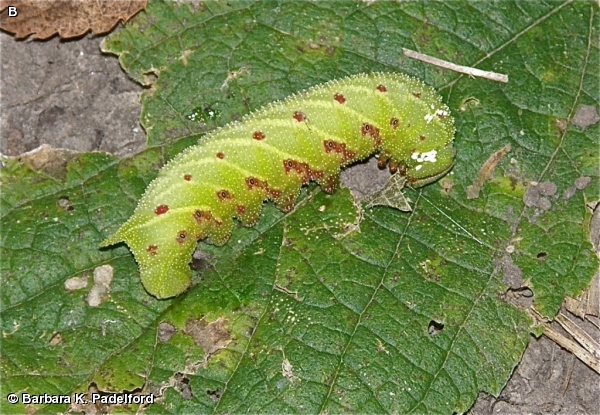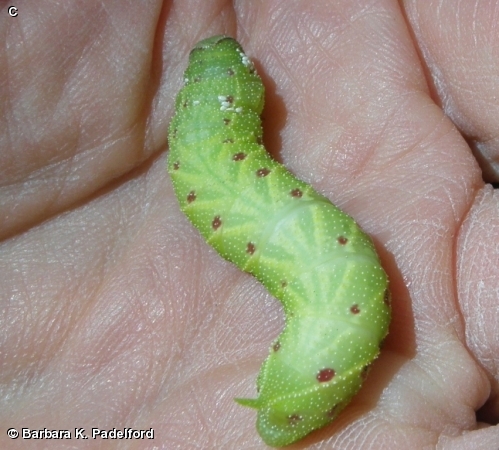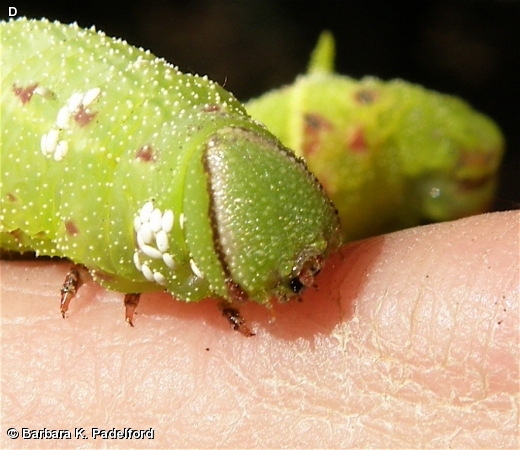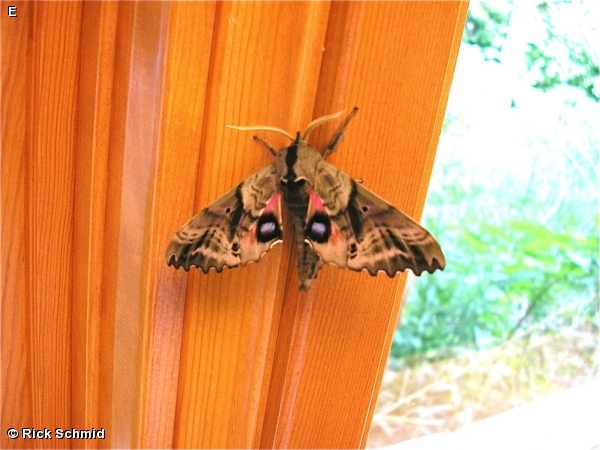
The Blinded Sphinx caterpillar grows to approximately 3 inches. The body is bright green and covered with prominent white granules. Some forms have wine-red spots surrounding the spiracles. The front of the head is flattened and rimmed with a pale line. The caudal horn is green and extends from abdominal segment 8. A white or yellowish oblique line extends forward from the base of the horn ending near the anterior margin of abdominal segment 7. Pale, thin oblique lines form V-shapes on the top of the abdomen. This caterpillar is highly variable and can be difficult to recognize in early instars. The adult moth has a wingspan of 3.75 inches. The wings have scalloped outer margins. The forewing is brown and tan. The hindwing is tan and bright pink. There is a large black spot near the inner margin of the hindwing that has a blue spot with no central black spot or “pupil” inside. Hence, the name Blinded Sphinx.
The Blinded Sphinx is thought to be common in Fontenelle Forest and Neale Woods. The larvae are present from June through fall. Adults are most common in June and July, and are attracted to lights.
The larvae feed on a variety of deciduous trees and shrubs including apple, basswood, elm, hawthorne, serviceberry and willow. The larva pupates in fall and overwinters as a pupa. The white spots in photo D are probably Tachinid Fly eggs. Tachinid Flies are common parasitoids of caterpillars.
Disclaimer: The content of NatureSearch is provided by dedicated volunteer Naturalists of Fontenelle Forest who strive to provide the most accurate information available. Contributors of the images retain their copyrights. The point of contact for this page is: Babs Padelford.




